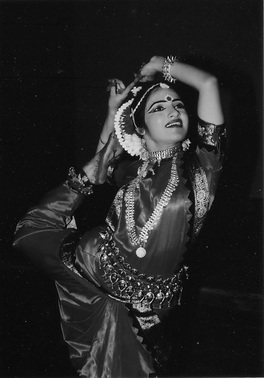Odissi

Odissi is one of the oldest classical dance forms of India. The dance form has originated in the state of Odisha in India and its history can be traced back to the 2nd century B.C. The first reference to this exquisite dance form is in Bharat Muni's Natyashastra. About 2000 years ago this art form was called "Odramagadhi". The dance acquired its present name 'Odissi' in the twentieth century.
Over the centuries three schools of odissi dance was developed, Mahari, Narthaki and Gotipua.
The word Mahari is formed by combining two words 'Maha' and 'Nari' means great women. This dance was performed by Devadasis and they dedicated the dance to Lord Jagannath. Initially Mahari dance was based on mantras and slokas.
In Oriya, the word "Goti" means "Single" and "Pua" means "Boy". For centuries Gotipua dance has been performed in Orissa by young boys who dressed up as female to praise Lord Jagannath and Lord Krishna. The dance is executed by a group of boys who perform acrobatic figures inspired by the life of Radha and Krishna.
The dance form of odissi that developed in royal courts is called the Narthaki tradition.
In its present form Odissi is a well established and codified classical dance form of India. Odissi is considered a dance of love, joy and intense passion. The dance is based on two basic postures: "Tribhangi" where the body is held with three bends of the head, torso and the knees and "Chouka" a square like stance that symbolizes Lord Jagannath.
Odissi is truly a celebration of human beauty through incredible grace and breath-taking movements, offered joyously as a prayer for the Divine.
Over the centuries three schools of odissi dance was developed, Mahari, Narthaki and Gotipua.
The word Mahari is formed by combining two words 'Maha' and 'Nari' means great women. This dance was performed by Devadasis and they dedicated the dance to Lord Jagannath. Initially Mahari dance was based on mantras and slokas.
In Oriya, the word "Goti" means "Single" and "Pua" means "Boy". For centuries Gotipua dance has been performed in Orissa by young boys who dressed up as female to praise Lord Jagannath and Lord Krishna. The dance is executed by a group of boys who perform acrobatic figures inspired by the life of Radha and Krishna.
The dance form of odissi that developed in royal courts is called the Narthaki tradition.
In its present form Odissi is a well established and codified classical dance form of India. Odissi is considered a dance of love, joy and intense passion. The dance is based on two basic postures: "Tribhangi" where the body is held with three bends of the head, torso and the knees and "Chouka" a square like stance that symbolizes Lord Jagannath.
Odissi is truly a celebration of human beauty through incredible grace and breath-taking movements, offered joyously as a prayer for the Divine.
